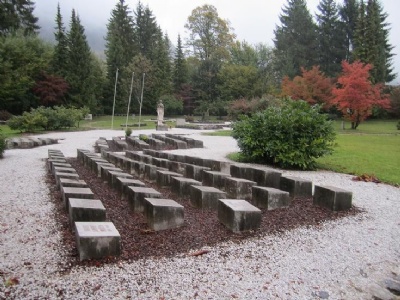Katzenstein Castle
In the small town of Begunje na Gorenjskem, about fourty kilometres north of Ljubljana, is a small castle called Katzenstein. The castle was built in the 1500s and until it became a prison in the 1800s had different functions. Shortly after the German occupation of Yugoslavia in April 1941, the castle was used as a temporary assembling place for prisoners to be deported to other prisons. But there were a lot of anti-german activities in the area so it became a permanent prison. During the war, there were 11,477 prisoners, the majority of men, imprisoned and several of them imprisoned several times. Some of the prisoners were deported to concentration camps, particularly Dachau and Mauthausen. Gestapo executed 897 prisoners at a location near the prison, others were executed at Draga valley, about four kilometers from Katzenstein. The prison was liberated by Yugoslav partisans May 4, 1945. 632 prisoners were then freed and 92 Germans serving in prison were captured.
Current status: Preserved with museum (2011).
Location: 46°22'37.6"N 14°12'03.6"E
Get there: Car.
Follow up in books: Pavlowitch, Steven: Hitler’s New Disorder: The Second World War in Yugoslavia (2008).





After the war and until 1991, Katzenstein continued to serve partly as a prison and partly as a kind of borstal. Since 1961, the part of the prison where death row prisoners awaited death penalty is a museum (Museum of hostages). In several prison cells prisoners have carved in final greetings to their loved ones. At the execution site, about 200 meters from the prison, a memorial park with monuments has been established and marked mass graves with the names of those executed. Since 1952, there is also a mental hospital in the castle, which was still in use in 2011.